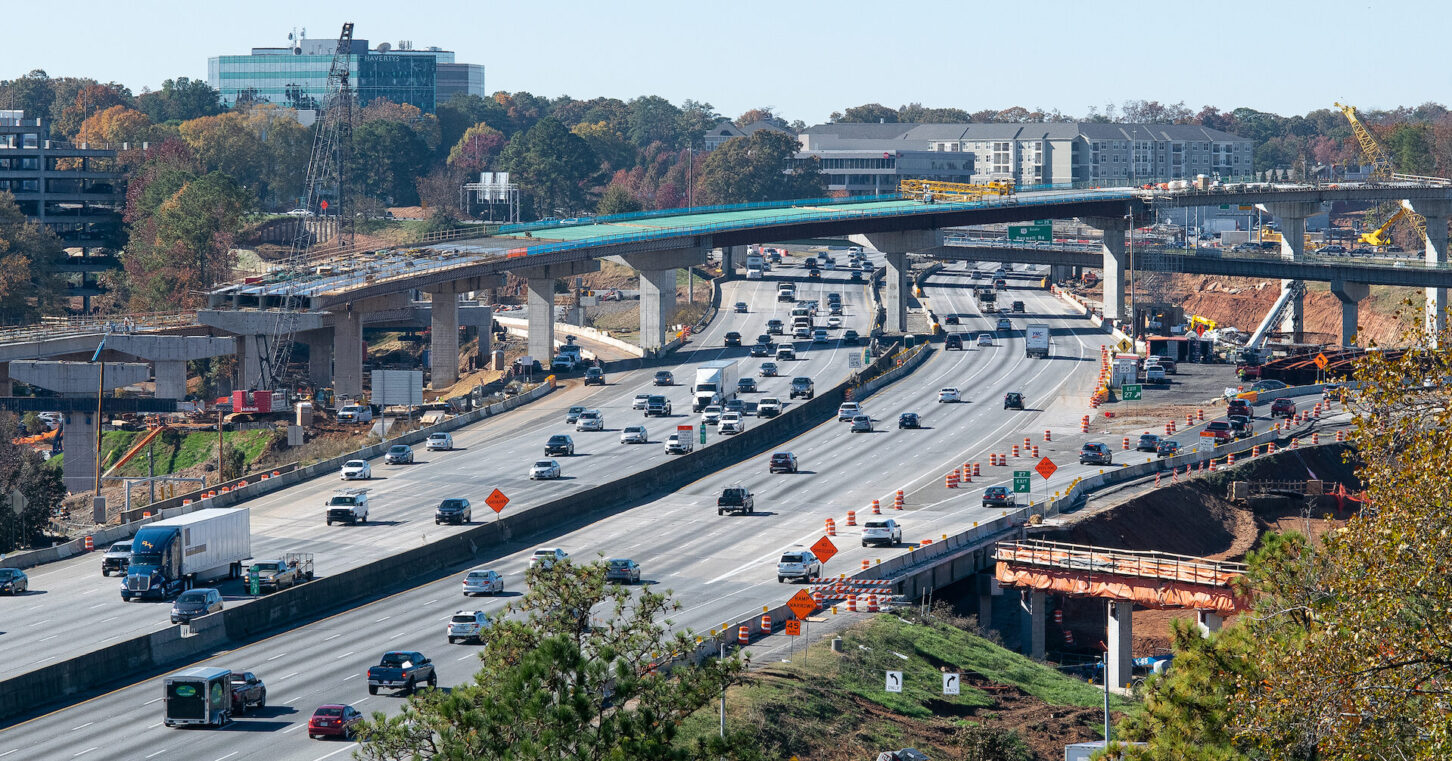
Road building in Georgia continues to evolve for the better.
Not long ago (2011) Georgia’s first variable-toll express lanes opened on I-85. That project was followed by the I-75 South Metro Express Lanes (2017), and then the Northwest Corridor Express Lanes on I-75 and I-575 (2018).
Ga. 400 is up next. The State Transportation Board on Aug. 15 selected a vendor to build 16 miles of express lanes on that heavily congested route. The project, which also includes bus rapid transit connections to MARTA rail, is due for completion by 2031.
This expansion alone would be worth cheering. Even better is the evolution in Georgia’s approach to these projects.
The new lanes on Ga. 400 – two in each direction most of the way, with one in each direction at the northernmost end – will not only add capacity, although that’s good. So is the fact that toll revenues will repay almost all of the project’s costs.
No, what’s best is that taxpayers needn’t even front the money for the project. The Ga. 400 express lanes will utilize a public-private partnership (P3). The winning consortium of companies will pay the state $4.05 billion toward the $4.6 billion project cost. The firms will then recoup their investment by collecting toll revenues for 50 years.
This arrangement minimizes the state’s financial burden by tapping into the hundreds of billions of private funds raised for such public infrastructure. It also frees up some $900 million in taxpayer funds for other road projects.
P3 deals have been used extensively in Europe and Asia, and the Ga. 400 contractors have built other such projects in Texas and Virginia. But Georgia has long risked missing out on this type of financing – leaving taxpayers on the hook for all of the costs.Now that we’re getting in on the action, let’s review how far we’ve come.
That first I-85 project drew criticism in part because it meant converting a “free” lane in each direction into a tolled one. These lanes were designated as high-occupancy vehicle (HOV) lanes because motorists were supposed to use them only if they had another passenger.
What the public didn’t necessarily understand was that the I-85 HOV lanes were performing so poorly that the state risked losing money. Baruch Feigenbaum of the Reason Foundation, a longtime metro Atlanta resident, explained why in a 2013 op-ed:
“Atlanta’s HOV lanes were paid for with federal funding,” Feigenbaum wrote. “That funding comes with the attached string that if the lane does not operate at 45 miles per hour or more 90% of the time, the state of Georgia has to reimburse the federal government 100% of the construction costs of that lane. The I-85 HOV lane failed that requirement.”
Rather than risk having to repay the money, the state converted those lanes to high-occupancy toll (HOT) lanes.
Motorists can use them for free if they have two other passengers, or they can pay to ride via a Peach Pass.
The number of people using the converted lanes actually increased by almost 58% between January 2012 and January 2013 – not despite the toll, but because of it. The toll kept the lanes from becoming overwhelmed by congestion and bringing traffic to a halt, which (perhaps counterintuitively) allowed more vehicles to use them.
The express lanes on I-575 and on I-75 both north and south of Atlanta represented new capacity. This has improved traffic congestion, including in the “free” lanes. But these new lanes were funded by taxpayers, after efforts to use P3 financing on the Northwest Corridor were scuttled. One wonders if we might have gotten more express lanes, or perhaps bidirectional lanes rather than reversible ones, if there had been less need to minimize upfront costs.
Now, we are getting an even better deal: new capacity, freer-flowing traffic and minimal taxpayer investment while those who use the lanes pay for them.
Next up is connecting all of these express lanes into a true network. That’s coming soon, and we ought to see it sooner thanks to Georgia’s evolution.